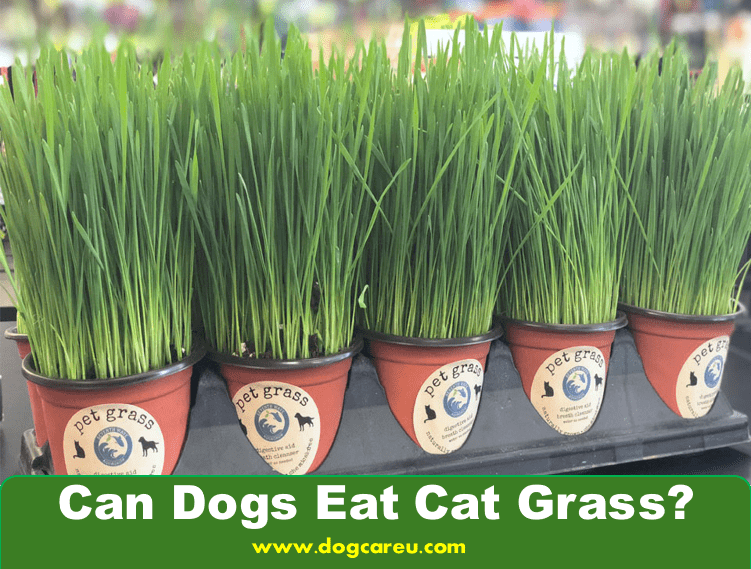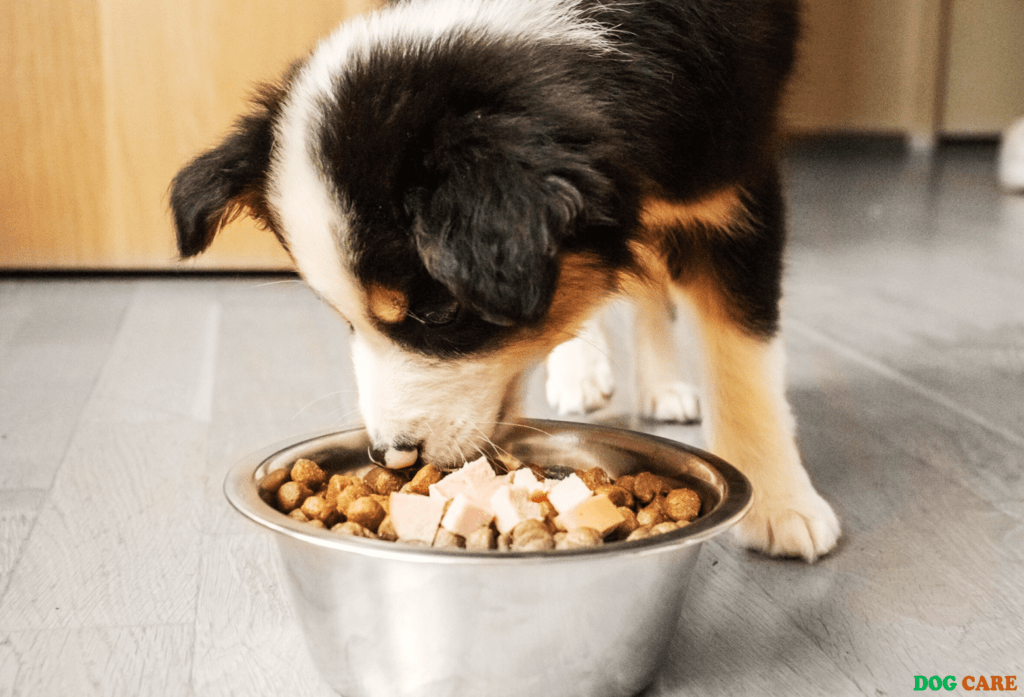Can Dogs Eat Cat Grass? Yes, dogs can eat cat grass. Cat grass is safe and beneficial for dogs to consume.
Cat grass, also known as pet grass or intermediate wheatgrass, is a healthy addition to your pet’s diet. Both cats and dogs may enjoy nibbling on cat grass as it provides natural fiber and essential nutrients. While dogs may eat grass to aid digestion or simply because they like the taste, cat grass can be a safe and beneficial option for your furry friend.
Offering cat grass to your dog can also provide enrichment and an outlet for natural behaviors. As always, monitoring your dog while it consumes any new food or grass is essential to ensure it is not overeating or experiencing any adverse reactions.

Benefits Of Cat Grass
Many pet owners wonder about the benefits of cat grass and if it is suitable for their dogs. Cat grass, also known as wheatgrass, offers several advantages for dogs and can be a valuable addition to their diet. Below, we’ll explore some of the benefits of cat grass that make it a favorable supplement for canine companions.
Natural Source Of Fiber
Cat grass is a natural source of fiber, which is essential for dogs’ digestive health. This gentle natural fiber aids in maintaining a healthy digestive system and can contribute to overall well-being. The fiber content in cat grass can help regulate bowel movements and reduce dogs’ risk of constipation.
Aids In Digestion
In addition to being a natural source of fiber, cat grass also aids digestion for dogs. The nutrients present in cat grass can support the digestive process and help alleviate gastrointestinal discomfort. By incorporating cat grass into their diet, dogs can experience improved digestion and better nutrient absorption.
Risks And Considerations
When considering whether dogs can eat cat grass, it’s essential to consider potential risks and important considerations.
Potential Digestive Issues
- Eating cat grass may lead to digestive issues such as vomiting or diarrhea in some dogs.
- Monitor your dog closely after consuming cat grass for any signs of discomfort.
- If your dog experiences persistent digestive problems, consult a veterinarian.
Non-toxicity To Dogs
- Cat grass is generally non-toxic to dogs and can be safe to consume in moderation.
- Ensuring that the cat grass is free from pesticides or harmful chemicals is crucial for the well-being of your dog.
- While cat grass can offer some nutritional benefits, it should not replace a balanced diet for your dog.
Cat Grass Vs. Dog Grass
Regarding our furry friends’ dietary needs, cats and dogs can benefit from having some grass in their diets, especially if they don’t have access to the outdoors. This is where cat grass and dog grass come into the picture. While they may sound similar, some key differences between the two are worth exploring.
Differences In Nutritional Benefits
Cat grass, or wheatgrass, is a nutritional powerhouse for cats and dogs. It is rich in gentle natural fiber, aiding digestion for various pets, including birds, reptiles, rabbits, hamsters, guinea pigs, and other small animals. The natural fiber in cat grass helps regulate their digestive system and can even prevent certain gastrointestinal issues.
On the other hand, dog grass refers to various types of grass that dogs prefer to chew on, such as couch grass, dog grass, quackgrass, or twitch grass. While dog grass may not have the same nutritional benefits as cat grass, it serves as a source of entertainment for dogs, keeping them occupied and preventing them from chewing on other potentially harmful objects.
Preferential Consumption By Cats Or Dogs
Cat grass is specifically grown for enjoyment, as many cats have an innate instinct to nibble on grass. It not only provides them with a natural source of fiber but also helps with their dental hygiene. Chewing on cat grass helps cats remove plaque from their teeth, promoting healthier gums and fresher breath.
On the other hand, dogs may also enjoy nibbling on cat grass, but their preference tends to be dog grass. While the reasons why dogs eat grass are not entirely understood, many believe that it could be due to boredom, an instinct, or to soothe an upset stomach. However, monitoring your dog’s grass consumption is essential, as excessive ingestion can lead to digestive issues.
In summary, cat grass and dog grass have unique characteristics and benefits. Cat grass, rich in natural fiber, aids in digestion for cats and dogs and supports their overall well-being. On the other hand, dogs may prefer dog grass for entertainment purposes or to alleviate minor stomach discomfort. Providing your pets with grass options suited to their specific needs is always a good idea, ensuring a happy and healthy furry companion.

Growing Cat Grass At Home
You may have noticed your dog’s interest in eating grass if you’re a pet owner. While it’s natural for dogs to consume grass occasionally, providing them with cat grass can help meet this behavioral need. Cat grass, typically consisting of oat, barley, wheat, or ryegrass, is safe for dogs and easily grown at home. Let’s explore the easy steps for growing and maintaining a steady supply of cat grass for your furry friends.
Easy Steps For Growing
When it comes to growing cat grass at home, follow these steps for a flourishing crop:
- Choose a shallow container such as a tray or pot with adequate drainage.
- Fill the container with a layer of potting soil, ensuring it’s evenly moist but not soggy.
- Spread the cat grass seeds evenly over the soil and press them gently to ensure good soil contact.
- Place the container in a sunny spot and water the seeds regularly, keeping the soil moist.
- Within a week, you will notice the grass growing, and it will be ready to serve your dog in around 1-2 weeks.
Maintaining A Steady Supply
Ensuring a consistent supply of cat grass for your dog requires regular care and maintenance:
- Trim the grass when it reaches a height of 3-4 inches to encourage new growth.
- Keep the grass in a well-lit area to ensure healthy and robust growth.
- Water the grass as needed, ensuring the soil remains moist but not soggy.

Frequently Asked Questions For Can Dogs Eat Cat Grass?
Can Dogs Eat Pet Grass?
Yes, dogs can eat pet grass, also known as cat grass. It can help with digestion and is safe for them to consume. However, excessive grazing may lead to vomiting in some dogs.
Is It OK for Dogs To Eat Grass?
Dogs may eat grass to soothe their stomachs or due to tastes, usually not causing harm, but can lead to vomiting.
What Type Of Grass Is Okay For Dogs To Eat?
Dogs can safely eat grass like Agropyron repens, also known as couch grass, dog’s grass, quackgrass, or twitch grass. It’s a normal behavior and can be beneficial unless it becomes obsessive. Eating grass helps dogs soothe an upset stomach and is generally not harmful, although it may cause vomiting in some cases.
Do Dogs Eat Grass Like Cats?
Yes, dogs do eat grass like cats. It is a common behavior for many dogs and is generally not harmful. However, it can cause vomiting and digestive issues in some dogs. Cats are less likely to eat plants compared to dogs.
Can Dogs Eat Cat Grass Without Getting Sick?
No, dogs do not eat grass or weeds to make themselves sick. Eating grass or weeds is a common and generally harmless behavior among many dogs.
Is It Safe For Dogs To Eat Cat Grass?
Yes, it is safe for dogs to eat cat grass. Cat grass, also known as wheatgrass, can provide nutritional benefits and help with digestion for cats and dogs.
What Type Of Grass Is Okay For Dogs To Eat?
One type of grass that dogs can eat is Agropyron repens, also known as couch grass or dog’s grass. It is a safe and healthy option for dogs to graze on.
Conclusion
While dogs eating grass is generally not harmful, monitor for digestive issues. Providing pet grass can be beneficial for their well-being and instincts. Remember, moderation is key in ensuring your furry friends stay healthy and happy. It’s worth exploring the benefits of cat grass for your canine companions.


